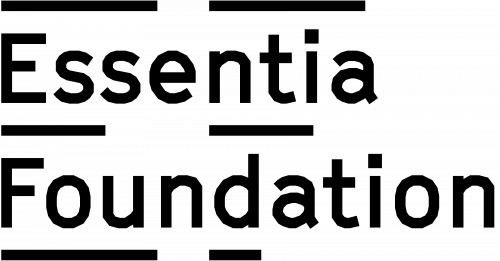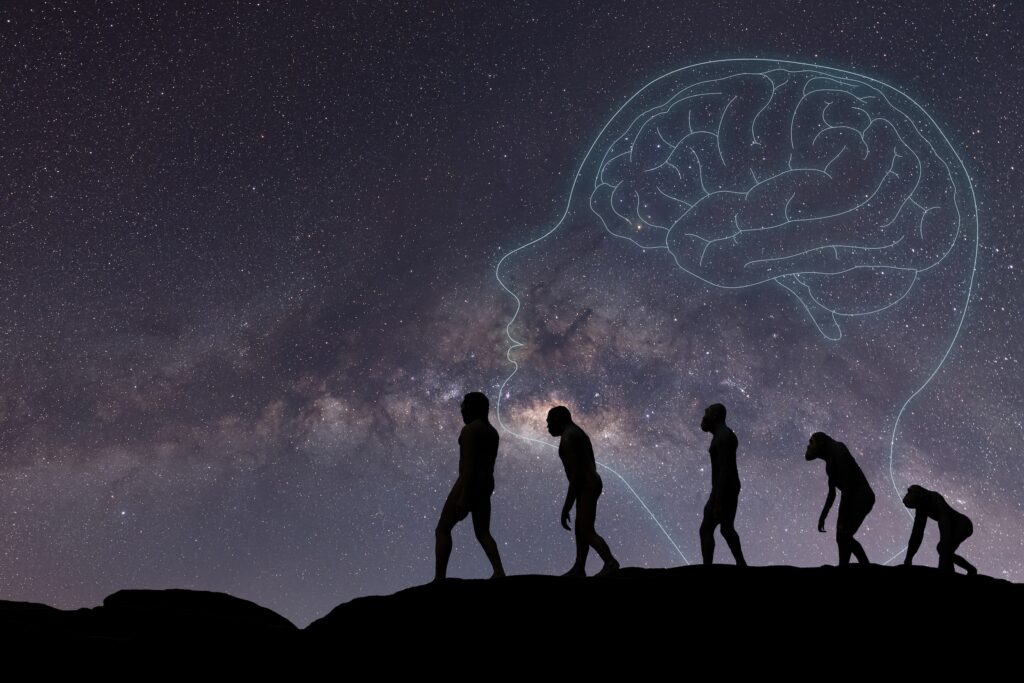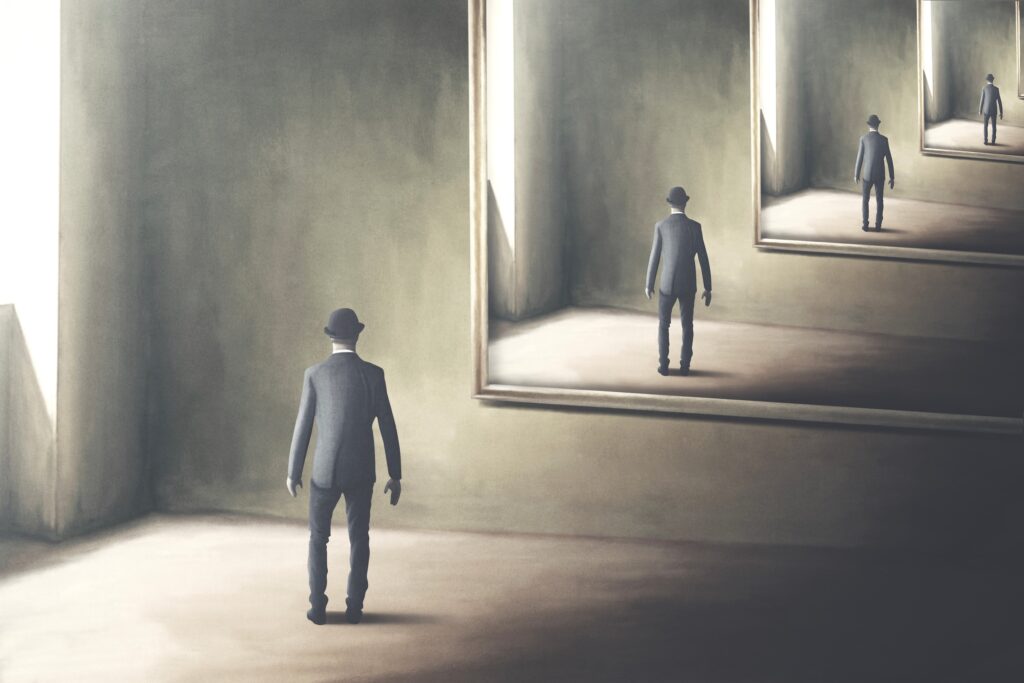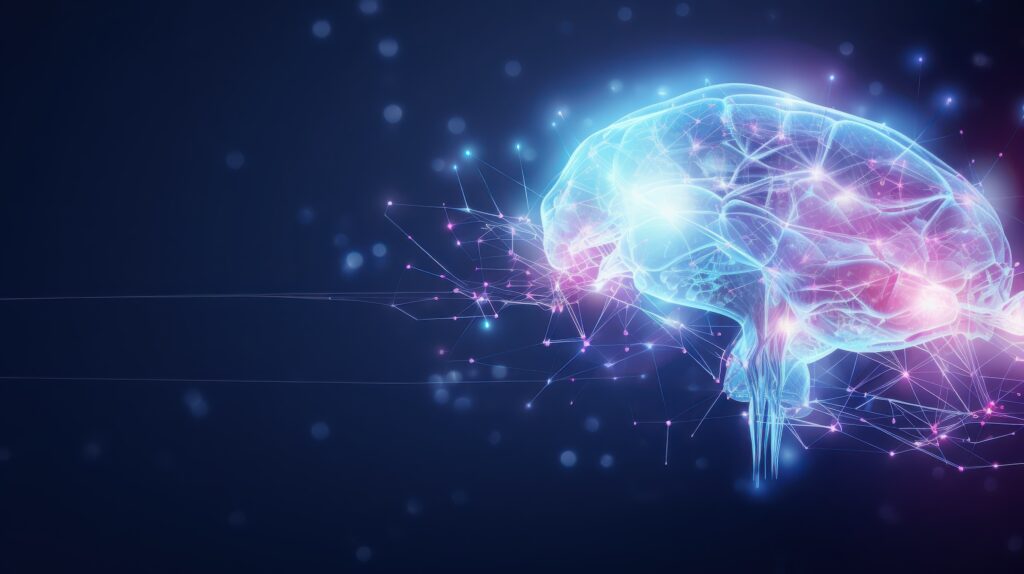The Demiurge in our brain’s left hemisphere
Reading | Philosophy
![]() Arthur Haswell, BA | 2025-05-30
Arthur Haswell, BA | 2025-05-30

The jealous and alienating gnostic Demiurge, a certain mode of attending to the world described by Heidegger, and Iain McGilchrist’s characterisation of the brain’s left-hemisphere, all share remarkable similarities, according to Arthur Haswell. He suggests thus that the Demiurge may be a symbol of something that lives in us, modulating how we relate to others and the world at large. As such, the holistic perspective of the right hemisphere may be a corrective that brings us closer to the transcendent and truly divine.
The Secret Revelation of John depicts a very different creation story to the one found in the Old Testament. In this version, the world is not the creation of a good, wise God, but of a foolish, myopic, arrogant imposter referred to as Yaldabaoth. This is a common theme in ‘gnostic’1 texts—a catch-all term for certain spiritual works that bear a family resemblance and often share a similar heritage. In many of them we find reference to this celestial ruler, although it is not always given the same name. In keeping with the lexicon of Plato’s Timaeus, a text that gnosticism was influenced by, it is typical to refer to this ruler as the demiurge, the architect of our world. A number of gnostic texts repeat Exodus 20:5 (“Thou shalt not bow down thyself to [other gods], nor serve them: for I the LORD thy God am a jealous God”), but frame this as the hubristic, ignorant sentiment of a vain and foolish ruler that is unaware that it is not the true God. The latter is considered a transcendent deity, and in The Secret Revelation of John it is described apophatically; that is to say, it is suggested by gesturing to what it isn’t. This is because it is both the source of everything that is, and beyond everything that is. It is beyond categories, beyond measurement. The demiurge, on the other hand, is a fallen being, the master of the material world; reality at its most base and furthest from transcendence.
One can approach gnosticism in different ways. Texts such as The Secret Revelation of John, The Reality of the Rulers, and On The Origin of the World offer detailed, mythological descriptions of how this world and its ruler came to be. These narratives were likely intended to be understood figuratively, although this, of course, leaves plenty of room for interpretation. Other texts, such as The Gospel of Thomas, Thunder, and The Vision of the Foreigner, take the form of wisdom literature that explores gnosis, the enlightened awareness of the divine nature of reality. After engaging with gnostic texts for long enough, one begins to gain an intuitive ability to recognise gnosticism’s themes and catch the scent of its savour, such that one notices it in works that may or may not have been directly influenced by it but nonetheless share some of its characteristics. This might be films such as The Seventh Seal (1957), 2001: A Space Odyssey (1968), Stalker (1979), They Live (1988), The Truman Show (1998), The Matrix (1999), The Tree of Life (2011), The Turin Horse (2011), and The Lego Movie (2014).2 Or it could be literary work such as that of Philip K. Dick, William Blake, Franz Kafka, and Jorge Luis Borges. There are also certain philosophers whose views share gnostic characteristics, such as Arthur Schopenhauer and Simone Weil. But most relevant to this essay is Martin Heidegger, of whom the major gnostic scholar Hans Jonas was a student.
A crucial aspect of Heidegger’s philosophy is his idea that there are two modes of attending to the world. The more primordial mode is the ready-to-hand. This is the kind of attention we give to tools we use when we are performing tasks that we are engrossed in, such as painting or cooking. In such activities, we don’t think about the wooden spoon we use to stir the pan, or the paintbrush in our hand. They are of-a-piece with the whole activity that we are engaged in. The second mode that Heidegger describes is the present-at-hand. If the head of the paintbrush snaps off as we are using it, we become suddenly very focused on this tool, and it is no longer of-a-piece with the activity of painting. We focus on the broken paintbrush and view it as a discrete object. This also anticipates the kind of attention we inhabit when thinking theoretically or analysing something in a laboratory. Our perspective becomes detached and there seems to be a subject-object divide, between us and what we are attending to.
Heidegger acknowledges that both modes are crucial aspects of our Being-in-the-world, but he worries that our culture places too much value on the detached, analytical kind of attention, and not enough on the intuitive, fluid, more holistic kind. In his later work, he discusses more explicitly the danger of humans treating the world as standing reserve, such that even mountains and rivers become reduced to functional resources to be used to serve our purposes.
The idea that we can become lost in the distractions of the material world, such that we forget our true nature, resonates with gnosticism. The Gospel of Thomas suggests that the true nature of reality is always just here, right in front of us, but we are so lost in illusion that we miss it:
Know what is in front of your face, and what is hidden from you will be disclosed. There is nothing hidden that will not be disclosed. [1]
For Heidegger, a preoccupation with the most detached kinds of attention belonging to the present-at-hand mode can result in a distorted, alienated way of attending to the world, where beings are stripped of meaning and reduced to mere things. It is only attention rooted in the ready-to-hand kind (even if it still inevitably strays occasionally and naturally into the present-at-hand) that discloses our embeddedness in a meaningful world, a world we are always already enmeshed in before we theorise about it. If we were to seek to fully synchronise gnosticism with Heidegger’s philosophy, we might imagine this mode to be one that affords the possibility of the kind of spiritual awareness that can be considered gnosis.
The philosopher, neuroscientist, and psychiatrist Iain McGilchrist has spent the last few decades studying how the two hemispheres of the brain are lateralised. In the two wonderful tomes he has written on this subject, The Master and His Emissary and The Matter with Things, he draws from thousands of studies to show how each hemisphere has its own way of attending to the world. He has also found that the left hemisphere tends towards a kind of attention that parallels Heidegger’s notion of the present-at-hand, while the right parallels that of the ready-to-hand:
The contrast here being drawn between, on the one hand, the isolated ego, standing in a relation of alienated and predatory exploitation to the world around it, mysteriously leaping from subject to object and back again, retiring with its booty into the cabinet of its consciousness, where it demands certainty of knowledge; and, on the other, a self that is drawn into and inextricably bound up with the world in a relation, not just metaphysical in nature, but of ‘being-with’ and inside, a relation of care (Sorge) and concern, suggesting involvement of the whole experiential being, not just the processes of cognition—this contrast evokes in my view some of the essential differences between the worlds that are brought about for us by the two hemispheres. But that is by no means all. Since Dasein [another Heideggerian term] is ‘to be there’ in the world—the literal, actual, concrete, daily world—to be human at all is to be immersed in the earth, and the quotidian matter-of-factness of the world. The right hemisphere is concerned with the familiar, not in the sense of the inauthentically routine, but in the sense of the things that form part of ‘my’ daily world or familia, the household, those I care for. It is not alien from material things, but, quite the opposite, attends to individual things in all their concrete particularity. This is exactly the ‘personal sensibility to the grain and substance of physical existence, to the “thingness” and obstinate quiddity of things, be they rock or tree or human presence’ that is found in Heidegger. Again this roots existence in the body and in the senses. We do not inhabit the body like some alien Cartesian piece of machine wizardry, but live it—a distinction between the left and right hemisphere understandings of the body. In trying to convey the ‘otherness’ of a particular building, its sheer existence or essent prior to any one act of cognition by which it is partially apprehended, Heidegger speaks of the primal fact of its existence being made present to us in the very smell of it, more immediately communicated in this way than by any description or inspection. The senses are crucial to the ‘presence’ of being, ‘to our apprehension of an is in things that no analytic dissection or verbal account can isolate’. [2]
Also key to McGilchrist’s work is his understanding of the left hemisphere as being arrogant, narrow-minded, myopic, easily prone to anger, grasping, and unaware of how little it understands. He shows this by citing myriad studies of people with lesions in the right hemisphere, or people who have had their right hemisphere temporarily shut down in a controlled manner.
It’s remarkable how closely the left hemisphere’s disposition aligns with that of the demiurge’s. Gnostic texts consistently portray the demiurge as having very similar traits. It is a jealous, wrathful, covetous, arrogant being that is unaware that it is not the true God, much like McGilchrist’s analogy of the emissary who has mistaken himself for the master. Time and time again, gnostic literature portrays the demiurge in this fashion. Not only that, but it is an architect, a kind of technician, which constructs the material world in a futile attempt to mimic the pleroma, the gnostic term for transcendent reality. The demiurge is like the person who mistakes the map for the territory, or who becomes so obsessed with the theoretical that they forget the world before them. All of this aligns closely with McGilchrist’s description of the left hemisphere’s disposition.
Not only are these parallels quite evident, but one gnostic text even explicitly mentions hemisphere lateralisation. The Mother of Books is an 8th century gnostic text associated with a mystical, neoplatonic branch of Shia Islam known as Ismaʿilism, and contains the following line:
The right half of the brain is the spirit of wisdom, and the left is the spirit of abundance. [3]
It’s fascinating how closely this dovetails with McGilchrist’s own analysis. He regularly relates wisdom to the more profound, holistic kind of attention that belongs to the right hemisphere, while the left tends towards breaking the world into pieces, a preoccupation with quantity, and an insatiable desire to obtain a greater abundance of material things.
It is also noteworthy that those who most devoutly worship an Old Testament, demiurgic ‘God’ seem to be individuals inclined towards the left hemisphere’s mode of attention. As Schopenhauer says,3 such demiurge worship
consists merely in an absurd and revolting theism. It amounts to this, that the κύριος [‘Lord’], who has created the world, desires to be worshipped and adored; and so above all he is jealous, is envious of his colleagues, of all the other gods. [4]
This criticism of course does not relate to more mystical branches of Judaism, Christianity, or Islam. But for those who treat their religion in a highly positivistic, literalist, black-and-white manner, where “God” is essentially just a celestial tyrant, it is difficult not to see them as inhabiting a highly left hemispheric perspective, and one belonging to those entranced by all that is demiurgic.
McGilchrist’s work hence provides neurological support to the gnostic view. In an age of dangerous hopes for empty paradises, the value of gnosticism is as a perspective that allows us to shoulder the world in all its tragedy, while not expecting it to be something it can never be. Yet, we can no doubt derive hope and a sense of the divine in our solitary wanderings in search of the transcendent.
Notes
1 I prefer not to capitalise ‘gnostic’ or ‘gnosticism,’ in keeping with the stylistic approach of The Gnostic Bible (ed. Barnstone & Meyer). This avoids suggesting that gnosticism was a unified or institutionalised religion.
2 The Lego Movie has remarkably gnostic themes, even if it lacks gnosticism’s savour. The foolish, monomaniacal, and irritable Lord Business represents the demiurge, obsessively imposing order on a world he doesn’t fully understand, and using glue to freeze it into place. This reflects the gnostic theme of a blind creator who mistakes imitation for creation, and who enforces a rigid system that cuts beings off from deeper reality. The citizens of Bricksburg live in ignorance of their true nature, much like the gnostic soul asleep in the illusion of the material world. Emmet’s awakening is a moment of gnosis, where he comes to see through the artificiality of the system and recognises the creative depth beyond it. The final shift to the ‘real world,’ where the child’s imagination is revealed as the source of liberation, evokes the idea of layered realities, with the transcendent always just beyond what appears.
3 Schopenhauer is specifically criticising Judaism here, which seems rather unfair, given the extraordinary profundity of some Jewish mysticism. However, I think it serves as a sharp criticism of all forms of demiurge worship when at their most dogmatic.
References
- Willis Barnstone and Marvin Meyer (eds.), The Gnostic Bible, Shambhala Publications, 2003, p. 5.
- McGilchrist, Iain. The Master and His Emissary: The Divided Brain and the Making of the Western World. Yale University Press, 2009, pp. 152-153.
- Willis Barnstone and Marvin Meyer (eds.), The Gnostic Bible, Shambhala Publications, 2003, p. 695.
- Arthur Schopenhauer, Parerga and Paralipomena, Volume I, “Fragments for the History of Philosophy,” translated by E.F.J. Payne, p. 126.

Essentia Foundation communicates, in an accessible but rigorous manner, the latest results in science and philosophy that point to the mental nature of reality. We are committed to strict, academic-level curation of the material we publish.
Recently published
Reading
Essays
Seeing
Videos
Let us build the future of our culture together
Essentia Foundation is a registered non-profit committed to making its content as accessible as possible. Therefore, we depend on contributions from people like you to continue to do our work. There are many ways to contribute.















